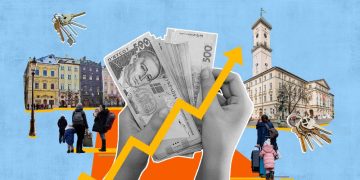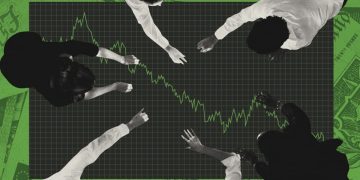The central bank is clearly ready for a shift in monetary policy. The only question is: Will it do it tonight?
It is becoming increasingly clear that the Canadian economy no longer needs the high and restrictive interest rates it has today. But for cautious Bank of Canada governor Tiff Macklem and his colleagues, whether to cut rates on Wednesday or wait until next month will depend on how sure they are that inflation is under control.
The Bank of Canada’s credibility has been on the line over the past few years, with erroneous forecasts of the output gap and inflation leading to interest rate hikes starting too late in 2022. Now, bank officials need to reassure markets that local price pressures will not return after they start lowering borrowing costs. It would be a serious blow to public confidence in the Bank of Canada if it cut rates too early, only to find it needed to raise them again.
According to the schedule, the Bank of Canada will announce its May interest rate decision at 21:45 Beijing time tonight, and the European Central Bank will also release its latest monetary policy statement after its rate-setting meeting a day later. In any case, the probability of the first decline of the G7 economies will come this week, but compared with the probability of the European Central Bank, whether the Bank of Canada can take away the title of the “first decline of the G7” one day earlier, there is still a little suspense…
Most analysts in a Bloomberg survey now expect the Bank of Canada to cut rates on Wednesday, but six of the country’s largest financial institutions are divided. Meanwhile, interest rate markets are pricing in about a three-in-four chance that the Bank of Canada will cut its benchmark (overnight lending rate) from 5 per cent to 4.75 per cent tonight – a good chance, but not enough to call the shots.

Of course, judging from the recent performance of the Canadian economy, conditions do seem ripe for the Bank of Canada to cut interest rates.
Over the past year, Canada’s gross domestic product (GDP) has been growing below its potential growth rate. There is also growing evidence that inflation, which fell back to 2.7 per cent in April, is continuing to move towards its 2 per cent target.
“If they (the Bank of Canada) want to cut rates, they have everything they need right now,” Andrew Kelvin, head of Canadian and global rates strategy at TD Securities, said in an interview. He expects the Bank of Canada to cut interest rates on Wednesday, a shift in his forecast after Canada’s first-quarter GDP data surprised on the downside last week.
During one of the fastest increases in borrowing costs in central bank history, the burden on Canadians has held up better than expected over the past few years. Canadian households have some of the highest debt burdens in the developed world, and while that has led to a slowdown in consumer spending, mortgage defaults remain low. According to the Canada Mortgage and Housing Corporation (CMHC), the mortgage delinquency rate in the fourth quarter of 2023 was just 0.17 per cent, up slightly from 0.14 per cent in the third quarter of 2022.
However, with more households refinancing at higher rates, the next two years are unclear. For some analysts, that’s an important argument for why the Bank of Canada needs to start cutting rates this week.
Of course, one benefit of waiting until July would be for the Bank of Canada to outline its plans more clearly in the form of a more comprehensive monetary-policy report, which would include updated forecasts for inflation and the economy.
Canadian dollar in focus

As far as financial markets are concerned, if the Bank of Canada finally decides to cut interest rates tonight, the overall risk appetite in global capital markets will be positive, although not necessarily very much. Since this week, with the Federal Reserve interest rate cut expectations continue to heat up, the bond market in various countries has generally risen significantly, yields have fallen, and the stock market as a whole has risen more or less.
And in the currency markets, the performance of the Canadian dollar is certainly likely to be a focus tonight.
If the Bank of Canada cuts its policy rate from 5 per cent tonight, it will have started its rate-cutting cycle much earlier than the Fed. Historically, as a close neighbor, the Bank of Canada’s monetary policy has tended to look more to the Fed’s “wink” form, and when they are inconsistent, the foreign exchange market can feel some pressure.
Elias Haddad, senior strategist at Brown Brothers Harriman, said, “The Bank of Canada is going to cut rates and that’s going to weigh on the Canadian dollar.” He, like many on Wall Street, expects the Bank of Canada to cut interest rates soon, while U.S. data could force Fed officials to keep rates higher for longer.
In fact, for many currency traders, the Canadian dollar is likely to remain under pressure against the U.S. dollar over the summer, regardless of whether the Bank of Canada chooses to cut rates in June or July. The latest position data from the U.S. Commodity Futures Trading Commission showed that bearish bets on the Canadian dollar by asset managers and hedge funds remained at nearly seven-year highs, having cut their positions only slightly last week.
Bank of America currency strategist Howard Du said even if the Bank of Canada does not cut interest rates this week, a sustained short-term rally in the Canadian dollar is unlikely. The Bank of Canada’s communication or guidance is likely to remain dovish as it is expected to want to lay the groundwork for a rate cut in July.
Over the past week, the volume of dollar-Canadian dollar call options has outnumbered puts by about three to two as the likelihood of a rate cut by the Bank of Canada has increased, according to data from the Depository Receipts and Clearing Corporation. Of the calls traded, 20 per cent had a strike price set at 1.40 or above – a level the Canadian dollar hit the last time it tumbled in 2020.
Of course, not all market participants are further bearish on the Canadian dollar right now. Shaun Osborne, chief currency strategist at Scotiabank, said that while traders are still actively shorting the Canadian dollar, there is a limit to how much the currency can fall even in the event of a rate cut “unless there is a new or additional incentive to extend the short position further.”
Some who expect the Bank of Canada to cut rates in June also think the loonie will recoup some of its losses later this year, when the Fed is likely to cut rates and thus narrow the interest rate differential with the Bank of Canada. Bofa’s Du believes USD/CAD will fall back to 1.35 by the end of the year as U.S. inflation and economic growth data continue to move lower. Once a Fed rate cut becomes more imminent, the Canadian dollar should see a more substantial rebound against the U.S. dollar.






























